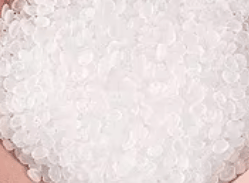Nitrile Finger Cots
Durable, Chemical-Resistant, and Safe for Sensitive Skin
HORBEST nitrile finger cots offer premium fingertip protection in environments where static control, chemical resistance, and allergy prevention are critical. Made from 100% synthetic nitrile rubber, these finger cots are completely latex-free—making them ideal for users with latex sensitivity or those working in regulated industries.
With excellent puncture resistance, flexibility, and anti-static performance, HORBEST nitrile finger cots are trusted by professionals in electronics, cleanrooms, and laboratories around the world.
✔ Key Features
•Latex-Free & Hypoallergenic: Ideal for latex-sensitive users and medical environments.
•Superior Chemical Resistance: Performs well against oils, solvents, and acids.
•ESD-Safe Material: Surface resistance of 1×10⁶ to 1×10⁹ ohms for static dissipation.
•Consistent Fit & Strength: Synthetic nitrile offers enhanced durability over latex.
•Cleanroom Compatibility: Pre-washed to reduce particulate contamination.
📐 Available Sizes & Styles
Size Description
S Slim fit for small fingers
M Standard adult size
L Finger cots large – for wide fingers or long-duration wear
Styles Available:
•Rolled edge (easy to apply)
•Textured (for better grip with small components)
•Matte surface (anti-slip precision control)
🔬 Technical Specifications
Property Value
Material Synthetic nitrile rubber
Latex-Free Yes
Color Options Blue, White
Surface Resistance 10⁶~10⁹ ohms
Thickness 0.10 ± 0.02 mm
Length 65 ± 5 mm
Powder-Free Yes
Silicone-Free Yes
Cleanroom Grade Class 100~1000 compatible
Packaging 500 pcs/bag, 20 bags/carton
🧪 Application Scenarios
•ESD-Safe Electronics Work: Ideal for PCB assembly, IC packaging, and repair.
•Chemical Handling: Resists oils, adhesives, and solvent-based materials.
•Medical & Clinical Use: Safe for sensitive skin and clean environments.
•Cleanroom Manufacturing: Maintains ISO class cleanliness and electrostatic safety.
💼 HORBEST – Your ESD Nitrile Finger Cot Partner
At HORBEST, we combine anti-static technology with skin-safe, latex-free materials to provide the best nitrile finger cots for high-risk and sensitive industries. With over a decade of experience, our products serve customers in electronics, aerospace, biotech, and beyond.
•Bulk and OEM options available
•Fast worldwide shipping
•Full technical documentation and support
•Meets IEC 61340-5-1 ESD standards
What is the difference? Nitrile Finger Cots vs Latex Finger Cots
Nitrile finger cots and latex finger cots are two commonly used protective solutions in industries like electronics, precision manufacturing, and healthcare. While they serve similar purposes, they differ significantly in terms of material, performance, and application. Here’s a detailed comparison provided by HORBEST:
1. Material Composition
Made from natural latex (extracted from rubber tree sap), containing natural rubber components such as polyisoprene. Additional agents like vulcanizers and accelerators are added for shaping and durability.
Note: While offering excellent elasticity, latex finger cots may cause allergic reactions in individuals sensitive to natural latex proteins.
•Nitrile Finger Cots
Made from nitrile rubber, a synthetic copolymer of acrylonitrile and butadiene. As a synthetic material, it contains no natural latex proteins.
Note: These nitrile finger cots are latex-free and hypoallergenic, making them suitable for users with latex sensitivity or allergies.
2. Key Performance Comparison
Elasticity & Fit Excellent elasticity (elongation >600%), smooth and skin-friendly Good elasticity (400–500%), slightly less conforming but still snug
Chemical Resistance Basic resistance to water and weak acids; easily degraded by oils and solvents Superior resistance to oils, greases, and organic solvents
Abrasion Resistance Moderate; prone to wear under continuous friction Excellent; lasts 30–50% longer due to stable structure
Temperature Tolerance -20°C to 80°C; less stable in heat -40°C to 120°C; performs well in extreme temperatures
Transparency High transparency (>80%); allows easy finger visibility Medium transparency; often semi-transparent or opaque (e.g., blue)
ESD Performance Basic ESD unless enhanced with additives; sensitive to humidity Naturally low-static; enhanced versions offer consistent ESD protection
3. Suitable Applications
•Latex Finger Cots
Best for tasks requiring high dexterity and tactile sensitivity, such as:
•Electronic assembly (in non-oily environments)
•Laboratory sampling
•Jewelry or watch repairs
•Medical examinations (for non-allergic users)
•Light-duty handcraft tasks
Limitations: Not suitable for prolonged wear, oily environments, or high-friction applications.
•Nitrile Finger Cots
Ideal for demanding, high-friction, or chemically exposed environments:
•Machinery maintenance (exposure to grease/oil)
•Printing and dye industries
•Chemical labs or solvent handling
•Production lines and automotive assembly
•Allergy-prone users, especially in healthcare or food industries
Note: HORBEST nitrile finger cots offer added durability and ESD safety, with optional color coding.
4. Other Key Differences
1.Cost
Latex finger cots are generally more affordable due to simpler natural processing.
Nitrile finger cots are about 200% more expensive, reflecting their synthetic nature and advanced performance.
2.Environmental Impact
Latex finger cots are biodegradable (6–12 months) and eco-friendly.
Nitrile finger cots are less biodegradable but can be reused multiple times to reduce waste.
3.Color Options
Latex cots are typically natural (white/transparent/yellow/black/orange).
Nitrile cots are available in multiple colors (e.g., blue, pink, black), aiding workflow differentiation.
•Blue: Often used for food or medical handling
•Black: Common in industrial environments
Conclusion: Which One to Choose?
Choosing between HORBEST Nitrile Finger Cots and HORBEST Latex Finger Cots depends on your needs:
•✅ For high tactile sensitivity and short-term use (non-allergic users): choose Latex Finger Cots.
•✅ For oil, chemical exposure, or allergy-sensitive environments: choose Nitrile Finger Cots.
•✅ For ESD-sensitive work or durable protection: HORBEST nitrile options are ideal.
Protect your work, protect your skin. Choose HORBEST – your trusted partner in ESD-safe and skin-friendly finger protection.
📩 Request a Quote or Free Sample Today
Looking for nitrile finger cots that combine strength, comfort, and
ESD protection?
✅ Click to get a bulk quote
✅ Download our spec sheet (PDF)
✅ Contact us for free samples
👉 [Request a Quote]
📞 Contact Us Today
For bulk orders, quotes, or product guidance, get in touch with our expert team:
Email: sales2@esdbest.com
Phone: +86 137 1427 2599



